
The religious heritage of Spain is spectacular. Hermitages, monasteries, churches and, of course, Spanish cathedrals adorn the provincial capitals and also the small towns. There are 93 of them and each one reflects the best of the style in which they were conceived, from the sobriety of the Romanesque to the elegance of the Gothic or the opulence of the Baroque. But there are special cases, six to be precise, where you can find two cathedrals in the same city.
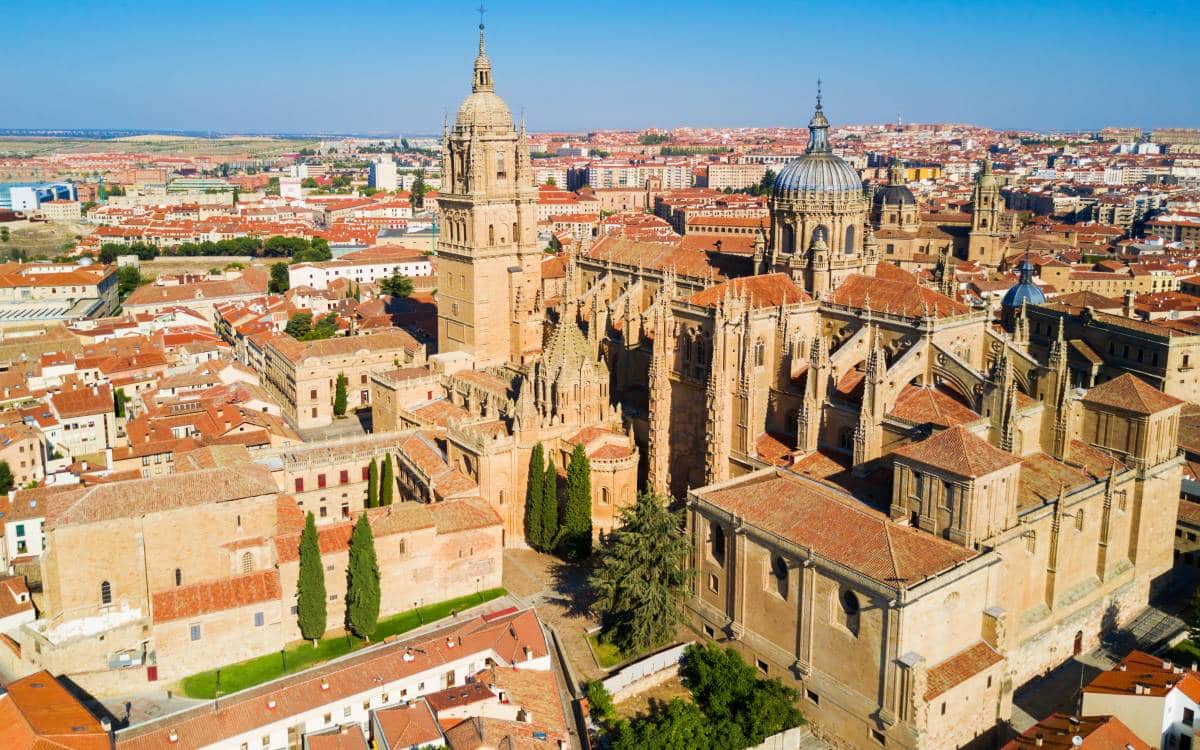
Salamanca cathedral complex. | Shutterstock
The cathedral complex is one of the biggest treasures of this city, which was also declared a World Heritage Site. These two temples have coexisted as one for four hundred years. The old cathedral, dedicated to Santa María de la Sede, was built between the twelfth and thirteenth century. Regarding this Romanesque temple, it is worth highlighting the Torre del Gallo, an intricate dome that can be admired closely on the visit to the roofs of the cathedral.
But the place of worship was not big enough, hence a new cathedral was built. The result of which was a magnificent building, this time dedicated to the Assumption of the Virgin. The work began in 1513, but was not finished until well into the 18th century. That is why you can find Gothic, Renaissance and even Baroque details in its architecture.
They originally intended to demolish the old cathedral as the work of the new one progressed. Fortunately, that idea never came to fruition, on account of which Salamanca preserves two of the most beautiful Spanish cathedrals.
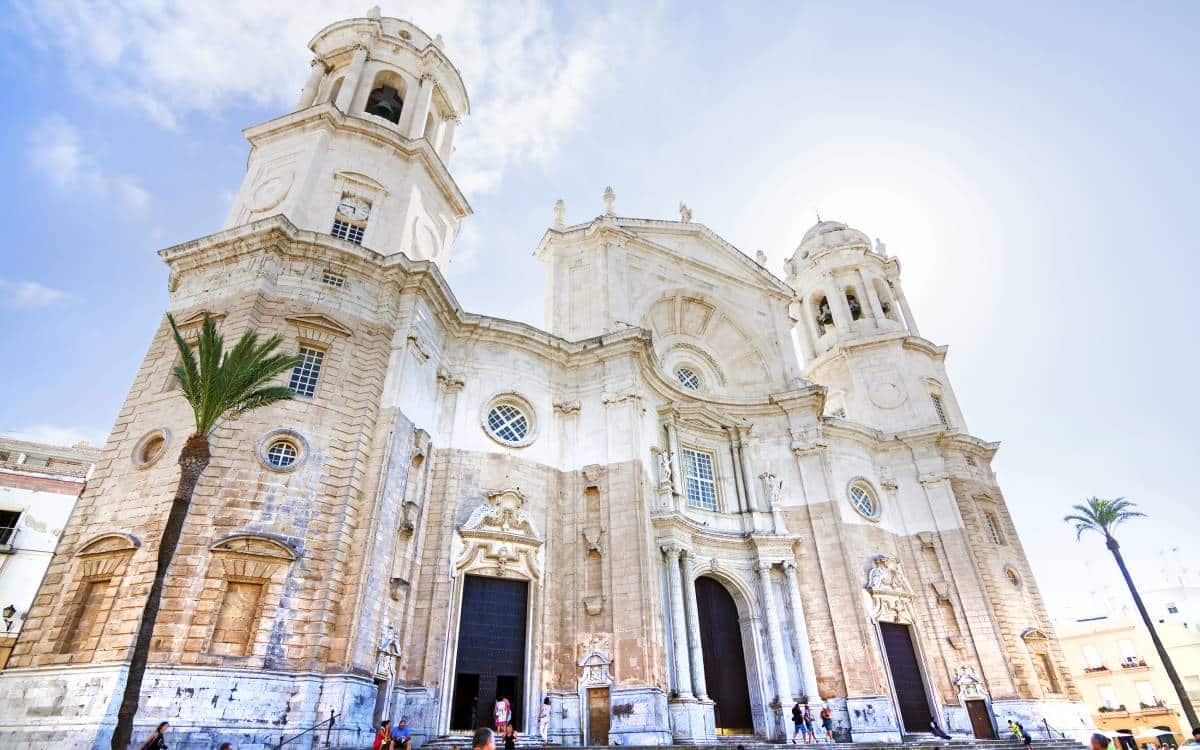
The Cathedral of Cadiz. | Shutterstock
The silhouette of the Cathedral of the Holy Cross of Cadiz, with its two slender towers, its domes and its two-shaded facade rises from the shore of the sea. It is a magnificent temple whose work began in 1722 and lasted for 116 years, hence the mixture of styles: Baroque in some elements and neoclassical in others.
There is another much older cathedral in the Tacita de Plata, the church of the Holy Cross. In fact, it was Alfonso X the Wise who ordered the temple to be built on top of an ancient mosque. A temple that was erected as a cathedral in 1263. Severe damage was caused to it when the city was looted by the Anglo-Dutch troops in 1596. It was rebuilt as we see it today, but soon it was decided that Cadiz deserved a much more splendid cathedral.
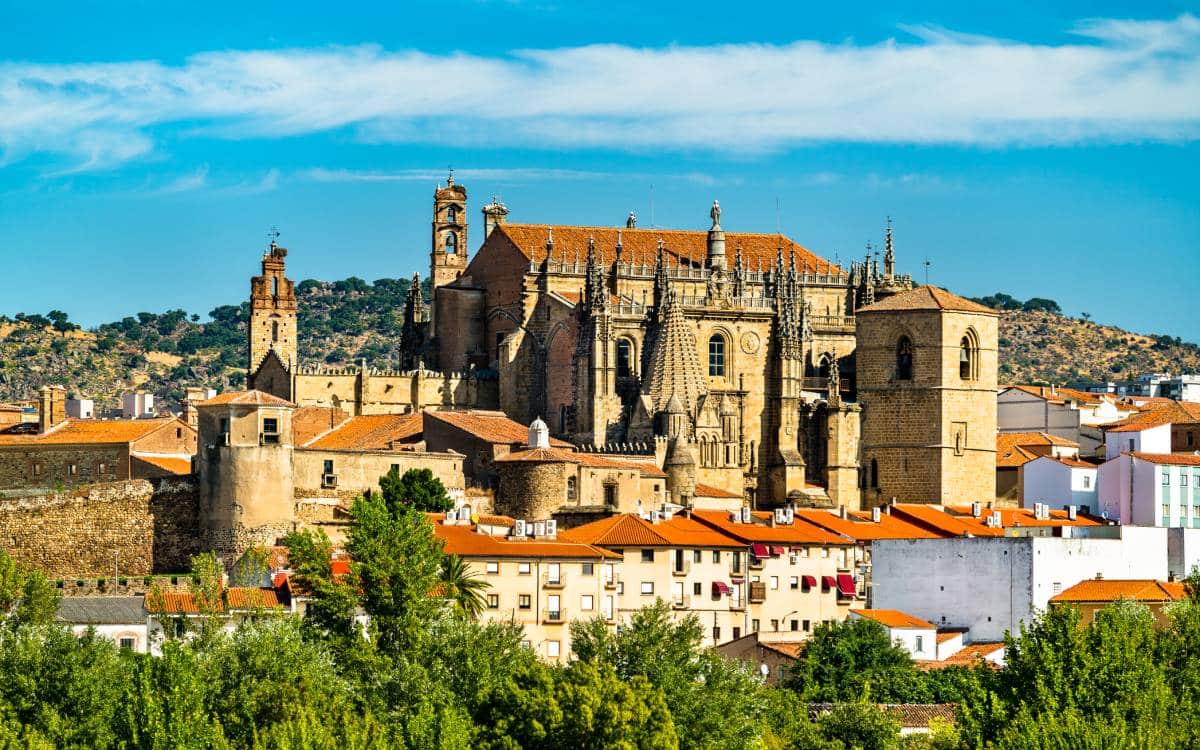
New cathedral of Plasencia. | Shutterstock
Of the list of Spanish cities with two cathedrals, Plasencia is the only one that is not a provincial capital. Both temples are dedicated to the Virgin Mary and neither of them is complete. The works of the old cathedral began in the beginning of the 13th century, in a style of transition from Romanesque to Gothic. It is an austere construction that only retains its three naves, since the headboard and the transept were used in the construction of the new cathedral.
Precisely, it is a wall adorned with an altarpiece that separates the old cathedral from the new one. Construction of the latter began at the end of the 15th century and continued throughout the following century. It is more imposing than the other one, unlike which, it does have a headboard and a transept, although it lacks the naves of the body and part of the rear facade. Inside one must pay special attention to the choir stalls and its main altar.
Just as it happened with the cathedrals of Salamanca, in Plasencia the intention was to keep the first one in use and demolish it after finishing the construction of the new one. Why did it not happen? Because of the cost it entailed in an era of economically tough times. We can be grateful for that because today we can appreciate these two Spanish cathedrals that are atypical and beautiful at the same time.
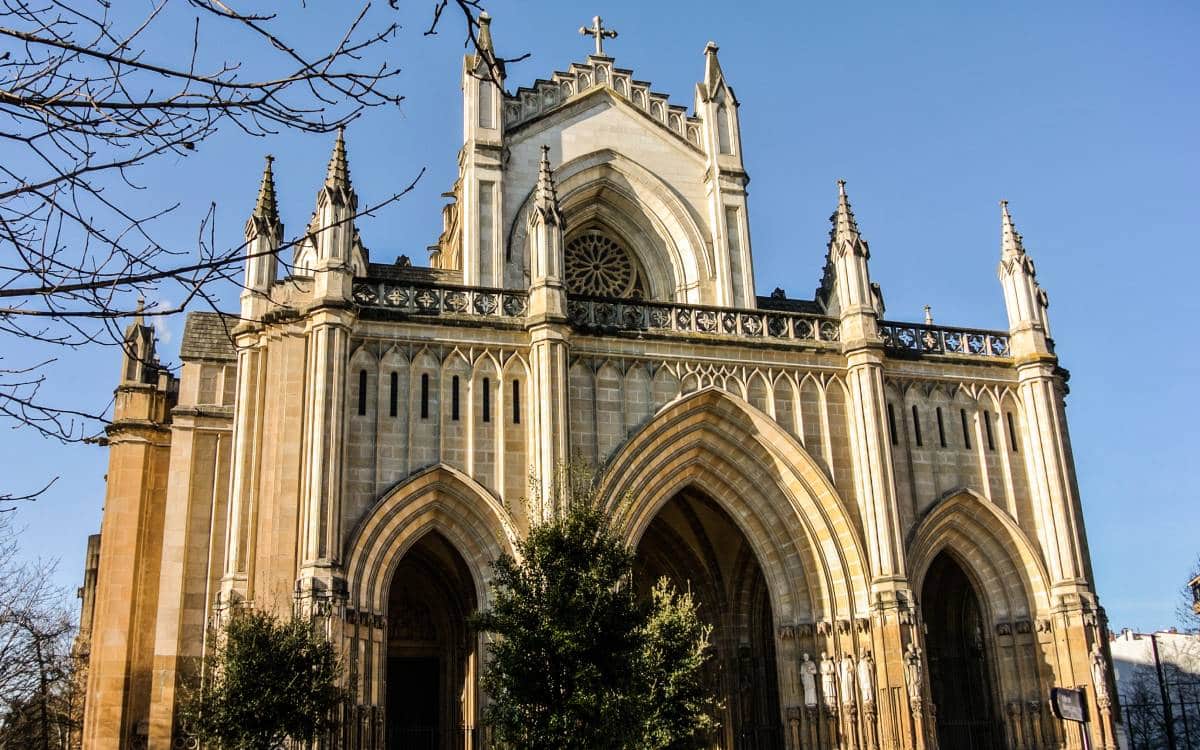
Cathedral of Vitoria. | Shutterstock
Among the cathedrals of Spain, that of Santa María of Vitoria has something that makes it stand out. Ken Follet took inspiration from it when he wrote the second part of The Pillars of the Earth. In fact, it was there that he presented his work A World Without End. Its construction began in the 13th century. It is a discreet construction, with a certain air of strength that at the time was part of the medieval wall.
But the structural problems of the old cathedral and the creation of the diocese that united the three historical Basque territories in the mid-nineteenth century influenced the decision to create a new one. Therefore, the Immaculate Mary of Vitoria is one of the most modern Spanish cathedrals, since it was developed in the beginning of the twentieth century in a neo-Gothic style.
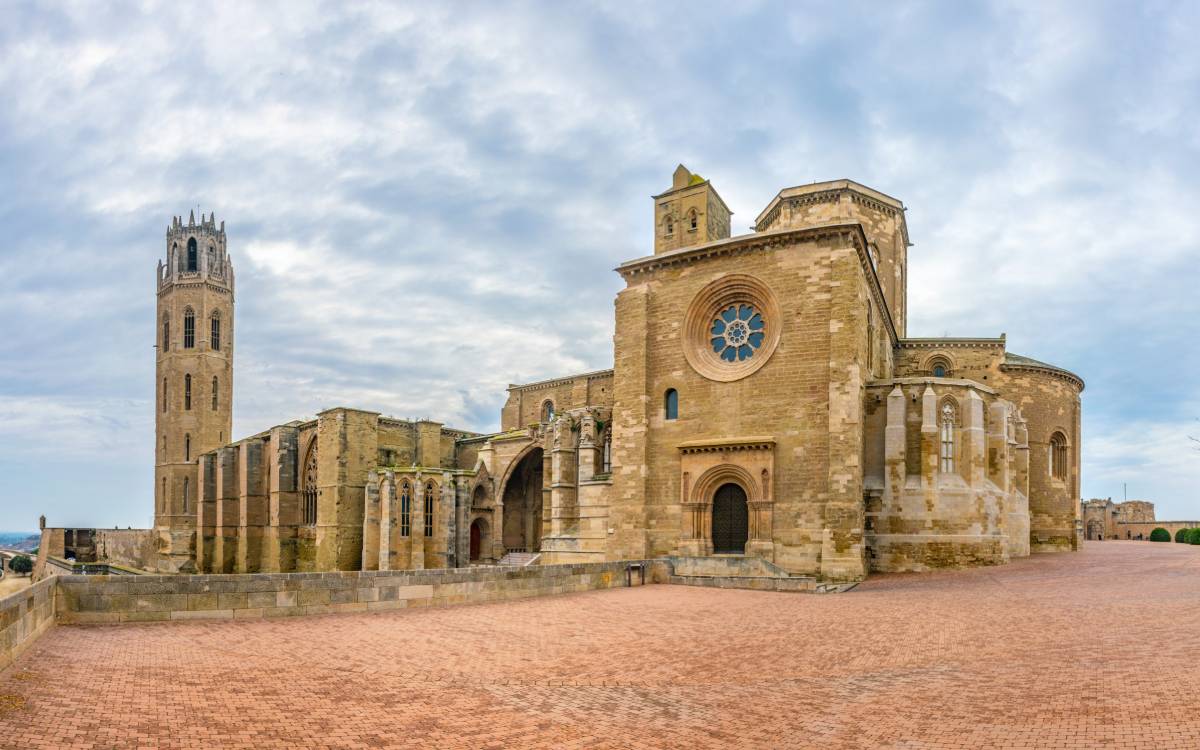
La Seu Vella. | Shutterstock
La Seu Vella, an imposing Romanesque building, stands on a hill overlooking the city of Lleida. It was built between the thirteenth and the fifteenth centuries, but due to its strategic position it was used as military barracks in the eighteenth century. It even became a concentration camp for Republican prisoners during the Spanish Civil War.
The transformation of the old cathedral forced the construction of a new Baroque styled cathedral in the centre of the city. It took just about 20 years of work to give shape to the Seu Nova, a Baroque style temple whose interior contains a unique carving: the Virgen del Chichón, a Gothic image that shows a unique purple spot on the forehead.
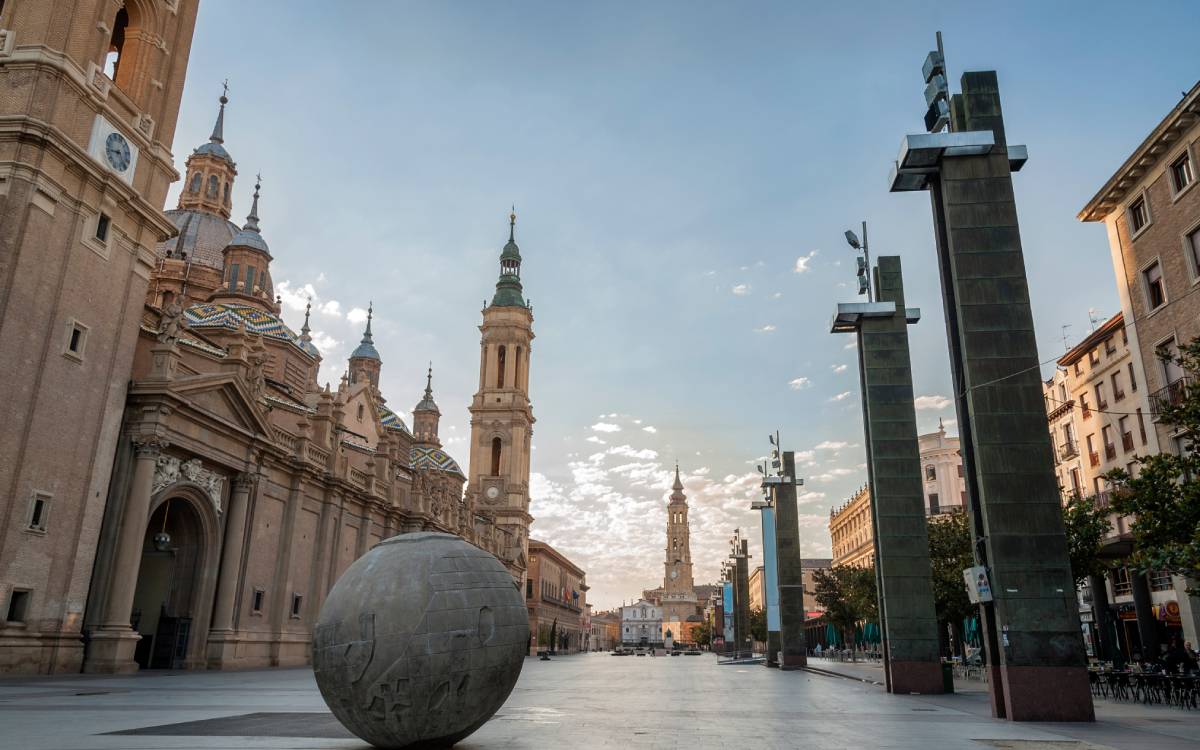
Plaza del Pilar in Zaragoza. | Shutterstock
The case of Zaragoza is exceptional. The cathedrals in the Aragonese capital cannot be classified as old and new, but as two different, independent and active cathedrals. The Seo, which was erected in 118 on the old mosque of the city, was the first cathedral of Zaragoza. Its mixture of styles is equally surprising and wonderful, from its magnificent Baroque cover to its beautiful Gothic altar, not to forget the wall of the annex of the chapel of the Parroquieta, a Mudejar jewel. It is one of the most unique and least known cathedrals in Spain.
The fact that the Seo sometimes goes unjustly unnoticed is due to the magnificent figure of the other cathedral of Zaragoza, the Basilica del Pilar. Before the current building, there was a primitive church, a Romanesque temple and another Mudejar Gothic one. But Marian devotion led to the decision in the seventeenth century to build a bigger temple, magnificent in fact, which is the one we can admire today.
Each temple had its own chapel, an issue that generated considerable tensions because both disputed the seat of the episcopal chair. Pope Clement X put an end to the litigation in 1676. He declared that both buildings are cathedrals, although they share the same council that every year, on April 1, changes residence and moves from one to the other.
You can also read this article in Spanish.